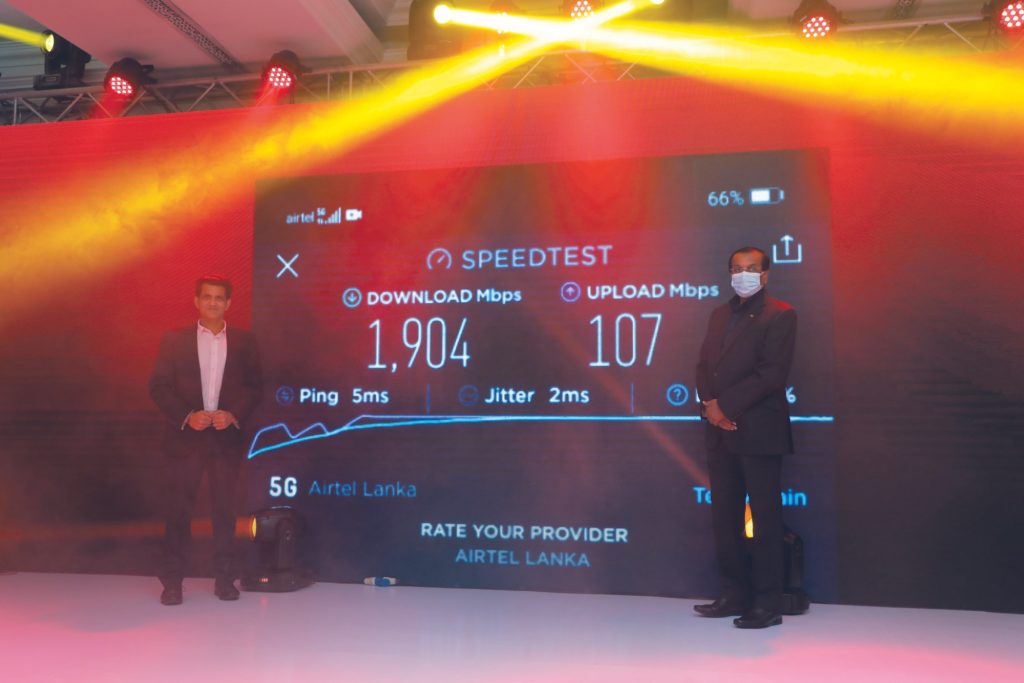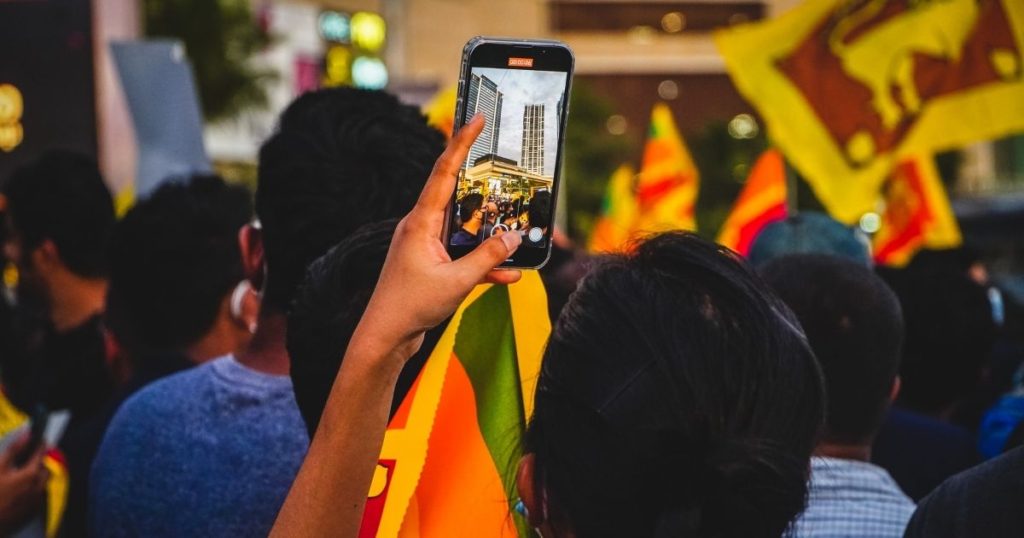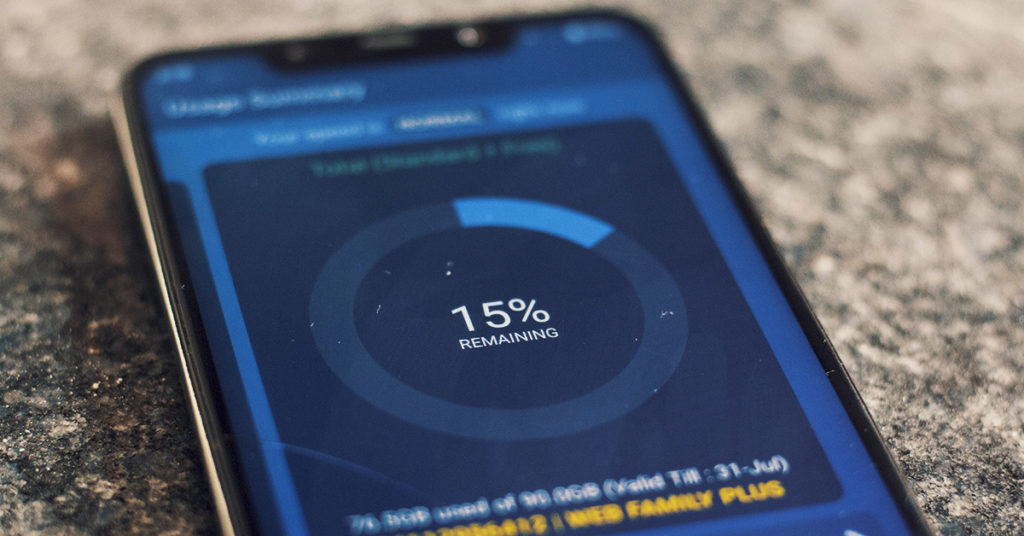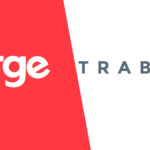With the onset of the Covid-19 pandemic in 2020, many industries increased their interest in future technologies, as they adapted to a changed world where digital connectivity is paramount for the survival of almost every industry. Each generation of connection technology, from 2G to 5G, has aimed to increase the user’s ease of access to the online world. Sri Lanka was the first in South Asia to offer 3G services and 4G was introduced to the country in 2013. Nearly a decade later, as the world looks at the next goalpost – 5G – Sri Lanka too is looking at the viability of adopting this technology.
The 2022 Ericsson Mobility Report, published last month, predicts that 5G subscriptions are expected to cross the one billion benchmark by the end of this year. The report further predicts the number of 5G subscriptions to pass five billion by 2028, noting that 5G is now live in all regions of the world.
Neighbouring India launched commercial 5G services in October 2022, with enhanced mobile broadband (eMBB) to be the main use case in India. However, the report notes that the manner in which service providers are choosing to roll out 5G varies as it depends on many local factors.
This certainly seems to be the case for Sri Lanka. With connectivity reaching greater heights with each passing year, Sri Lanka is now looking at launching the 5G network in the country. However, stakeholders question the viability of launching 5G commercial services at a time when the country is going through its worst economic crisis.
Lessons from India
At this year’s Internet Day, organized by the Federation of Internet Technology Sri Lanka (FITIS), the ‘Future of Connectivity’ panel saw key stakeholders in the telecommunication industry discussing 5G.
Airtel Lanka’s CEO Ashish Chandra said that the learnings gained from implementing 5G could be applied to Sri Lanka, adding that they had seen a clear correlation between the economic growth of a country to the penetration of broadband services in the country. “When we do an empirical calculation, it shows us that every 10% increase of broadband penetration leads to a 1% growth of GDP.”
He pointed to five factors that led to increased broadband penetration and consequently, increased economic growth:
- Cost of a device that is inversely proportional to the broadband penetration of a country
- Availability of services
- Cost of the broadband services itself – is it affordable to the common masses and can they use it freely?
- Digital mindset, both from the government and private sector – are they doing digital first things or migrating services to digital platforms?
- Level playing field for equal chances to small and new operators as the large ones.
“I think in Sri Lanka, we have made progress in some of them, but there is still a little way to go forward,” he added.
Although ousted President Gotabaya Rajapaksa’s election promises included the delivery of 5G mobile broadband coverage islandwide, the onset of the economic crisis this year, followed by two years of pandemic lockdowns, raises questions about how the cost of living crisis has affected the public’s access to digital connectivity. In September, the Telecommunications Regulatory Commission of Sri Lanka (TRCSL) approved a tariff hike of 20% for mobile, fixed, and broadband services. The VAT for telecommunications services was also increased by 3%.

Moreover, with inflation at an all-time high and the cost of goods such as phones and laptops rising exponentially due to import restrictions and the devaluation of the rupee, whether consumers would be able to bear the additional cost of 5G in the current economic background is a question that must be asked. This is as the government attempts to digitize the economy, alongside private players such as Dialog Axiata’s investments in future technologies.
Chandra commented on Airtel’s experience with launching 5G services in India, where the company has 5,000 to 6,000 towers covering all the large cities, with a plan to expand 5G across India by the middle of next year. “We have invested nearly tens of billion dollars in rolling out 5G services – we are offering very high-grade services.”
However, he reflected that their first few experiences in India had not been very encouraging. “Firstly the penetration of the 5G network is at about 7% to 8%. However, when we ask the consumers about the difference they are feeling, they report that there is hardly any difference. The reason for that is there is nothing that resides in your mobile which cannot be catered to through a 4G network. There is not a single app that requires a 5G network.”
“Even if we talk about the industrial applications – we serve those through private networks. Typical ones are catered best through fiber, there is no need for even a 4G service there. For low-latency mobile applications like robotics, 4G is good enough. Probably the only requirement of 5G will come when we have ultra-low latency mobile applications.”
He emphasized that they were yet to decipher an economically viable use case for 5G in India as of now.
An impossible investment in the current economy?
Chandra questioned whether Sri Lanka’s telecommunication industry was prepared for the expensive investment that 5G would require, for it to be rolled out across the country.
“In Sri Lanka, even if we have to roll out 5G in critical areas, my estimate is that each operator will require about USD 200 to 250 million to roll out the network across Sri Lanka. This means the four networks will need at least a billion-dollar investment. In Sri Lanka, there is only a 5% to 7% penetration of devices now and probably about 15% (best forecast) to 20% in one and a half years. Where will the money come from, with the current state of the economy? Where will the return on investment come from? Even if we are able to find the money for the investment, I believe the burden of return will be passed on to the consumers. So is this the right time to make this investment and increase the burden on the consumers by raising the prices?” questioned Chandra.
Speaking to ReadMe, Hutchison Telecommunications CEO Thirukumar Nadarasa echoed similar concerns, noting that the timelines for the launch and availability of 5G services in Sri Lanka had been significantly impacted.

“This impact is due to the biggest financial crisis ever experienced by Sri Lanka from the second quarter of 2022,” said Nadarasa. Painting a bleak picture, Nadarasa said the viability of the entire telecom industry in Sri Lanka, not just a massive future investment in 5G, needed to be reviewed.
He explained that this was an infrastructure industry, where most telecommunication equipment was imported and paid for in foreign exchange.
“It is well known that the forex reserves of the country are presently barely sufficient to cover import essentials like food, fuel, and medicines. 5G deployment by the industry will require hundreds of millions of dollars which are simply not available in the country at present. The country will need to prioritize where scarce forex should be used.”
“The other option would be for the foreign investors of present telcos to inject the required forex funds to deploy 5G networks. However, with the sudden depreciation of the LKR from 199 to 360 LKR / USD, generating the 80% additional local income to repay these forex funds will be very difficult notwithstanding the local unavailability to convert LKR to USD. This is especially so when Sri Lanka already offers one of the lowest telecom tariffs in the world making it difficult to generate the extra cash required to repay shareholders.”
Therefore Nadarasa said in the present circumstances, it would be very difficult for investors to make such major investment decisions. He emphasized the need for Sri Lanka’s economic situation first to stabilize and then improve to rebuild the forex reserves of the country, for it to be in a position to contemplate investing in 5G.
“We could be looking at a postponement of another couple of years before it becomes viable to launch 5G in Sri Lanka,” he said.
Regulatory requirements
Meanwhile, Airtel CEO Chandra said that greater clarity was required about the regulatory spectrum in Sri Lanka as that would decide the network strategy for each operator to roll out 5G on a long-term basis.
Earlier this year, TRCSL permitted Airtel Lanka to shut down its 3G network in Sri Lanka, primarily to utilize the existing frequencies for 4G services which offer better capacity at a higher speed. Ericsson’s mobility report notes that many service providers in South East Asia and Oceania are shutting down their 2G and 3G services in order to re-farm spectrum for 4G and 5G networks.
“For 5G, you need a lot of microsites (every 100m to 200m) which means that the usage of public ‘furniture’ – lamp posts, infrastructure, etc. – has to be made available to the industry. This has to be a policy decision to make the public good available for telecom operators. The other requirement is access to a fiber network because 5G sites only work on that.”
We have no guidelines about how the fiber network will be shared with the other operators yet. There is work to be done to provide a level playing field for new operators and small operators in the country.
– Ashish Chandra, Airtel Lanka CEO
“Based on my experience, we are a little away from the launch of 5G in Sri Lanka, rightly so in the current economic conditions,” said Chandra.
Then there’s Dialog, who has taken a more ambitious role. The telco was the first in South Asia to trial 5G in 2018. A year later, Dialog demonstrated 5G for holographic video calls, robotics, and mobile 5G services on the 3.6 GHz trial spectrum, allocated by the TRCSL for a 5G pre-commercial trial. AT FITIS’ Internet Day, Dialog Axiata Group CEO Supun Weerasinghe said that Dialog was ready to expand 5G in Sri Lanka as soon as the government gave commercial licenses.
“We have trialed 5G in about 80 sites and no sooner the government is willing to give commercial licenses, we will expand 5G because we believe in giving nothing but the best for Sri Lankan consumers,” said Weerasinghe.
Referring to the current economic crisis in the country, Weerasinghe noted the embrace of technology is needed to overcome the challenge. Dialog invested USD 152.4 million this year to improve its infrastructure, including the expansion of its 4G-LTE network, following TRCSL’s approval for Airtel to shut down its 3G network. On 21 December, the company announced that it successfully tested the mmWave 5G for the first time in the subcontinent.
The 5G landscape for Sri Lanka
The Ericsson Mobility Report forecasts much of the growth for 5G services in South East Asia and Oceania to come from the adoption of 5G in manufacturing, energy, utilities, financial services, healthcare, media, and entertainment industries. 5G users in Australia, Singapore, and Thailand are expected to use cloud gaming, 360-degree videos, AR apps, and virtual events more frequently than 4G users.
“The global 5G industry had been searching for unique use cases for 5G but had only come up with self-driving cars and remote surgery which on its own is unable to financially justify the huge investment required in 5G, especially in Sri Lanka’s market. Although there is essentially 100% penetration in mobile devices in Sri Lanka, today only 60% have a smartphone for their 3G or 4G broadband services,” said Nadarasa, commenting on 5G implications in Sri Lanka.
Estimating that only about 50% of mobile subscribers were currently on 4G services, Nadarasa said that it was going to be very difficult now for mobile subscribers to upgrade their phones to 5G because the LKR depreciation had doubled the cost of smartphones. “This again puts a question mark on the economic viability of a massive 5G investment.”
“The priority should be placed by the industry and the government on first getting 100% of the population on the first step of broadband connectivity. The main difference between 3G, 4G, and 5G is that each evolution basically offers a bigger broadband data pipe to accommodate the rapidly growing data traffic. Essentially what 5G will offer will be an even bigger data pipe than 4G,” said Nadarasa.
However, Nadarasa noted that 5G services were a faster data service than 4G so 5G data consumption and usage would increase significantly, although that did not necessarily mean the service experience would see a sudden improvement from 4G. “This is because today most data users still use a smartphone handset to access data services. When the screen size remains at five or six inches whether you are watching YouTube on 4G or 5G may not show any discernible improvement. Higher data usage for similar experiences may also result in higher internet bills for the consumer on 5G.”
The case for unlimited internet
The key selling point of 5G is faster connectivity, where users can download and stream much more content very easily. However, this raises the question of whether a limited data plan will be sufficient for 5G users to truly enjoy the benefits of 5G connectivity.

Sri Lanka only offers unlimited internet in the form of selective packaging for specific services or via speed capping. When questioned about plans to introduce unlimited internet, Nadarasa said that offering unlimited internet services would result in a very small percentage of subscribers fully consuming and occupying the broadband network which would limit the vast majority of subscribers’ access to an internet connection with good service levels.
“The analogy I use to explain is, imagine you allow everyone and anyone to use the expressway with no lanes, no speed limits, and on any type of vehicle. What kind of experience would the users of the expressway receive? This is the present issue with even 4G broadband services and certain controls have to be put in place to manage the very heavy data users to enable a pleasant internet experience for all,” he said.
5G and practical implications
ReadMe reached out to PickMe, a company offering digital solutions to mobility services in the country, for their expectations for 5G implementation in Sri Lanka.
PickMe CEO and Founder Zulfer Jiffry stressed that 4G was now a necessity islandwide for when drivers move from point A to point B, as they need coverage. He added that although their systems were not designed for 5G, they need 5G because with it comes new use cases and new technologies. “Obviously for what we build as a company now, 4G is sufficient. 4G across the country is what is required. 5G opens up new use cases.”
For Zulfer, 5G was exciting due to the potential for implementing new use cases to drive better experiences for customers. In addition to providing digital services to the transportation industry in the country, PickMe also works with big data. Zulfer commented on how 5G technology would potentially help them with this. “We are one of the largest data science teams in the country. With 5G, we will probably have more data coming through so that will give us more insights about users.”
Of course, 5G’s potential extends further to numerous other industries. Take competitive gaming, for instance, a sector that continues to show promise in Sri Lanka. With the growing online space and increasing investment into areas like cloud gaming, 5G could likely offer a notable upgrade to the gaming experience. That being said, much of this potential is yet to be realized in actuality.
With Ericsson stating that all mobile data growth traffic is expected to come from 5G in 2028, it is clear that the world will continue to invest in 5G technology at a faster rate in the coming few years. However, whether Sri Lanka is ready to keep up with these growing changes while struggling to recover from a severe balance of payments crisis remains a question. Perhaps a bigger question is about how these technological changes will serve the public in an equitable manner, with poverty projected to remain above 25 percent in the country in the next few years.





GIPHY App Key not set. Please check settings